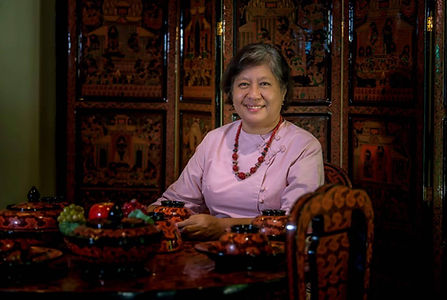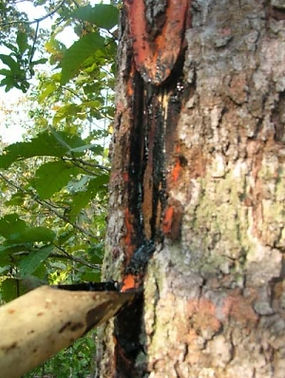About Bagan
One of the most remarkable sights in Southeast Asia, Bagan has inspired visitors to Myanmar for nearly 1000 years. The kingdom of Bagan took root in the 8th century but only rose to glory as capital of the First Kingdom of Myanmar in the early 11th century. Ancient chronicles say that there were once 4446 temples over its wide plains but today only 2230 remain, as recorded by UNESCO in 1988.
Many of the temples were architectural wonders of their time and still inspire awe among visitors. There is hardly a trace of cement in the fine masonry work. The massive roofs were held up by clever use of arches and barrel vaults. The windows were arranged to throw rays of sunlight directly onto the faces of massive Buddha images within the vaulted chambers.
Bagan is also famous as the centre of Myanmar’s thriving lacquerware industry. Today tourists can watch the skilled artisans as they work on the various stages of the six-month process.



About Bagan House
The Burmese Lacquerware is a living traditional art that began with the Pagoda in Bagan since 11 the Century. Since then it has never fade away and has still been producing as a professional business by the people in Bagan.
The Bagan House Lacquerware enterprise was first established in 1930, during the British colonial times, by U Pho Guang, great-grandfather of the present owner Ma Maw. It was then named "Saya Gung" after its founder lacquerware caskets labeled "Saya Gaung" can be found in a British Museum and also in the possession of collectors. Daw Wei, the daughter of the founder and the grandmother of Ma Maw, even traveled as Thibaw and Nyaung Shwe in the Shan states, the hilly region, to sell the exquisite lacquerwares to
the Saw Bwas (the Shan equivalent of Maha Rajah) during their reign.
Ma Maw's father, U Tint Aung also worked as the production manager at the Government Institute of lacquerware Manufacturing. He attended a course in Lacquerware at Wajima Lacquerware School in Khu-ra-mai, Kyu Shu Island, Japan, from 1969 to 1971. While giving lectures and practical training at the government institute, a cottage industry also runs in his house. Ma Maw, the fourth generation in this business, has inherited it from her ancestors is now manufacturing both traditional and modern design Lacquerware, furniture, and ornaments required for home decoration and other household items.
The History of Lacquer
in Myanmar
The earliest written record of the origin and the use of Lacquer in Burma was described in a Chinese test the “Pyu”, the first urbanized of Burma between 3rd to 7th century A-D in Thayekhitya or present day “Pyi” which is about 250 kilometers from Yangon to the west .the Chinese text also mentioned that the sap of the lacquer was used by the pyu to decorate the palace architecture. The forest -dwellers also use the sap of the lacquer to apply on the vessels as a water proof coating.
During the golden era of Bagan dynasty between 11 to 13 century A.D, the use of the lacquer was not recorded , so previously it was not known when lacquer was first used in Bagan but now fragments of lacquered basketry vessels were recovered from the Laymyetthna temple from 13 century A.D .So this ahistorical evidence that the sap of lacquer started to use in Bagan since Bagan dynasty.
Some scholars said that China started this lacquer process making earlier than the any other country in the south east asia. Anyway it may coming from China , our process of this lacquer objects in Myanmar is not like China .Because we have our own evolution style .Most Chinese and Vietnam lacquer are decorated with mother of pearl and painted the colour with brush. Our Bagan lacquer is different own stlye and the design is made by acthing needle.


Fragments of lacquered basketry vessels recovered from the Laymyethna temple, Pagan. Thirteenth century.

Lacquerware Process

Sap From Tree
The sap used in lacquerware, is called Thit-si, literally meaning wood varnish. It is the sap of Melanorrhoea usitata, a tree native to south east asia.Lacquer tree grows wild up to elevation of three thousands feet and sandy soils in the drier forests of Myanamar. Reaching 15-18 meter in height with girth of 2-3 meter when fully grown its first branches begin several meter above the ground .Coverd with canopy of large leaves. It is a fine upstanding denizen of the rain forest and is particularly striking in full bloom when it assumes a mantle of thick creamy white blossoms which later turn red.

Split the bamboo

Joint base of tray and bowl

Coiling offering bowl
In order to produce a good piece of lacquerware, its surface must be painted on the inside and outside with lacquer first, and then stored in a dry cellar. The lacquer is applied in at least eight and up to sixteen different layers.

Dry Inside Cellar
In the final stage, the lacquerware artist draws the traditional designs with a needle. Then, the etched lines of the patterns are filled with different colours. Adding the red colour is from cinnabar turns the sap into a rich vermillion colour.

Filling the red colour

Paint Lacquerware Juice
Green is obtained from the indigo plant and other earth colours are used to fill in the etched lines of the patterns.

Etching Design
A skiful traditional artist has to take six months or even one year to produce prime quality lacquerware.
Bagan House Artistic Lacquerware work shop, one of the traditional work shops in Bagan, welcomes you to have a look at how much care we take in producing our lacquerware.
